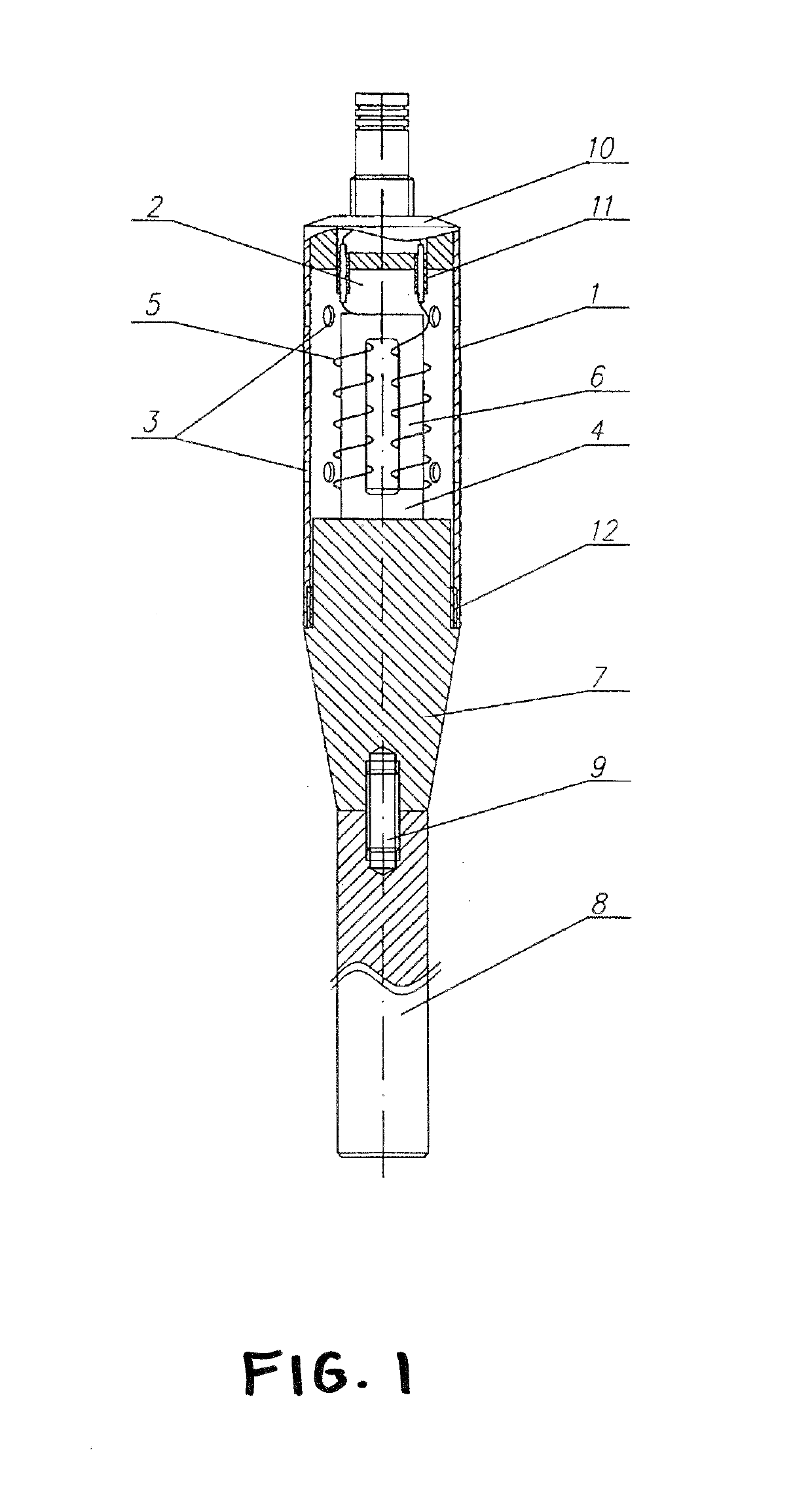Downhole Acoustic Emitter
- Summary
- Abstract
- Description
- Claims
- Application Information
AI Technical Summary
Benefits of technology
Problems solved by technology
Method used
Image
Examples
Embodiment Construction
[0024]A downhole acoustic emitter contains an open support housing 1, with a cavity 2 and windows 3. A rod magnetostrictive transducer 4 with electric windings 5 on rods 6 is located within the cavity 2 of the housing 1. The downhole acoustic emitter also includes an acoustic waveguide 7, the upper end surface of which is coaxially connected to the lower radiating surface of the magnetostrictive transducer 4 by soldering. The acoustic waveguide 7 is made in the form of a cylinder, which passes into a decaying cone, while the cylindrical part of the acoustic waveguide 7 is located in the support housing 1 and the conical part is located outside the support housing 1. The lower end of the acoustic waveguide 7 is attached to the upper end of the radiating element 8 by a threaded connection 9. The radiating element 8 is made in the form of a cylinder or a prism with a square cross section. A standard geophysical end 10 of the brand NK-36 is installed in the support housing 1 to connect ...
PUM
 Login to View More
Login to View More Abstract
Description
Claims
Application Information
 Login to View More
Login to View More - R&D
- Intellectual Property
- Life Sciences
- Materials
- Tech Scout
- Unparalleled Data Quality
- Higher Quality Content
- 60% Fewer Hallucinations
Browse by: Latest US Patents, China's latest patents, Technical Efficacy Thesaurus, Application Domain, Technology Topic, Popular Technical Reports.
© 2025 PatSnap. All rights reserved.Legal|Privacy policy|Modern Slavery Act Transparency Statement|Sitemap|About US| Contact US: help@patsnap.com

